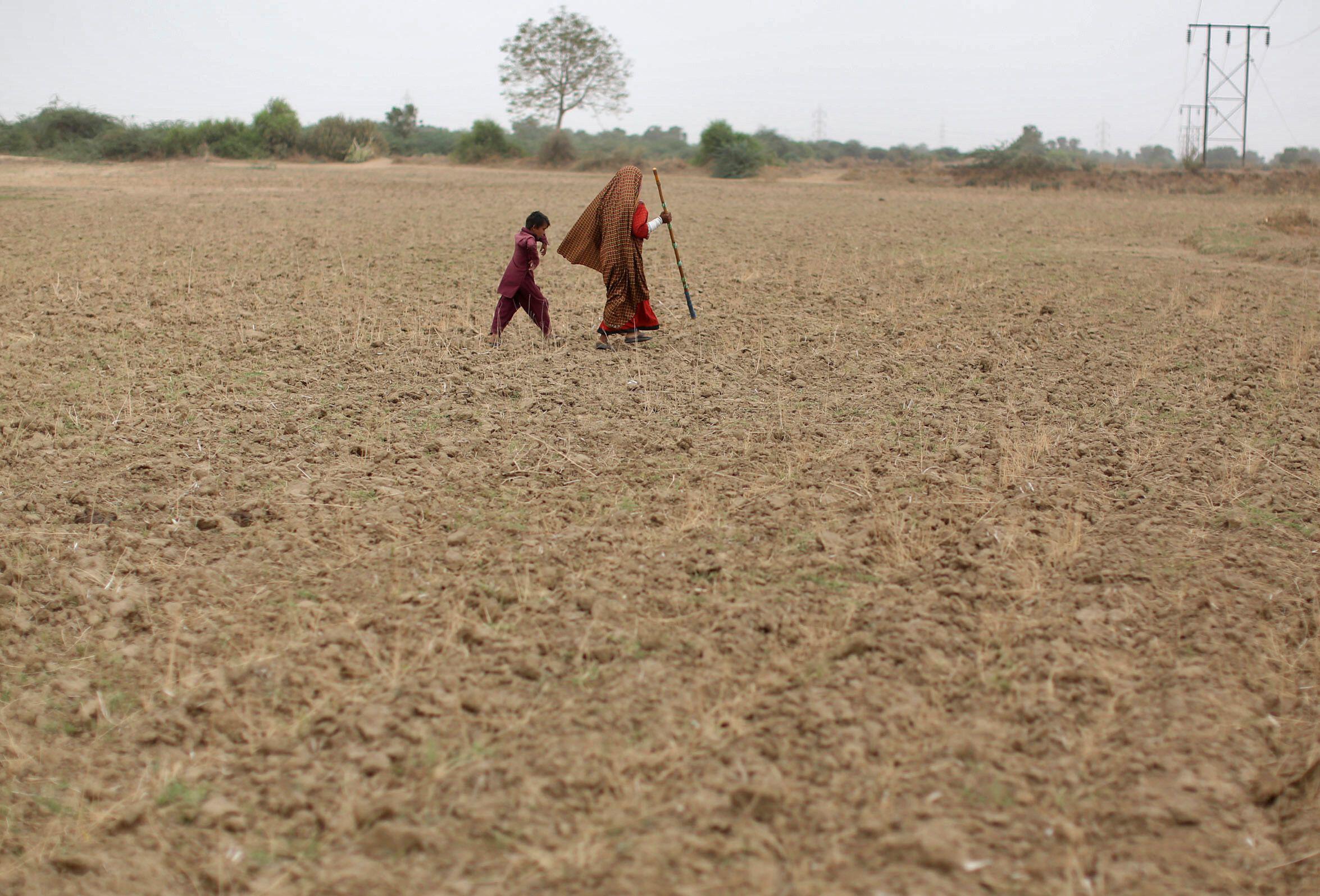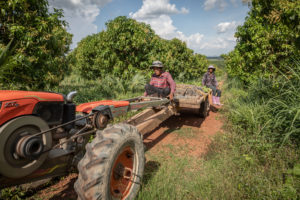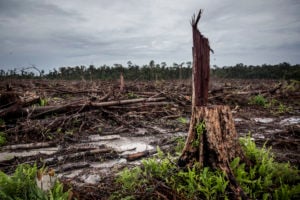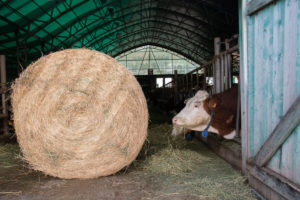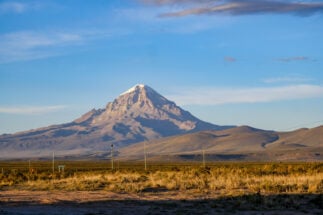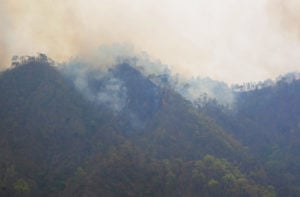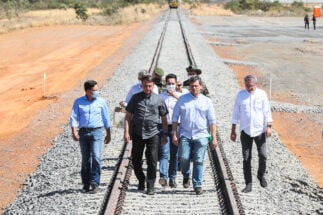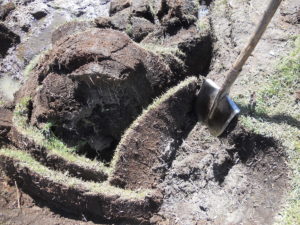In 1992, three UN conventions were established to combat climate change, biodiversity loss and desertification. Reporting from Rio de Janeiro – a city of green hills sloping down to a warm sea – I noticed bemused expressions on the faces of many delegates as the contours of the third were being discussed. They had not been told that their countries were facing desertification. Why did they have to be part of that convention?
Thirty years later, many are still asking that question. This is despite the clear warning in the recent UN Global Land Outlook 2 report that as much as 40% of all land is degraded. This affects half of humanity and threatens about half of global GDP.
On 9 May, representatives from all 196 members of the UN Convention to Combat Desertification (UNCCD) gathered in the city of Abidjan, Côte d’Ivoire, to discuss for two weeks what is to be done to restore land, especially at this time when there is a direct threat to growing our food.
This is the 15th major conference of the UNCCD. As with the others, so far it has been marked by media indifference, especially compared with the UN conferences to combat climate change or biodiversity loss.
I asked a senior official in a major international environmental NGO about this a few years ago. “Oh, the UNCCD summit,” he answered. “That’s very peaceful. That’s where goat breeders from India and Morocco meet to exchange notes.” You can see why the media is not interested.
So far, the UNCCD has been marked by media indifference, especially compared with the UN conferences on climate change or biodiversity loss
Why has there been such a lack of interest, even among environmentalists? Historically, many global NGOs have seen the UNCCD as overly focused on the Sahel. Then there is the fact that desertification just attracts less interest than climate change and biodiversity loss – both from scientists and the general public. Finally, the issue may have been sidelined because it occupies a middle ground, hard to separate from climate and biodiversity.
But desertification hits more people than goat breeders, as the Global Land Outlook 2 report makes very clear. And desertification starts with land degradation, which is happening in nearly every country but is clearest when droughts hit farms that are not irrigated. And droughts are getting more frequent and more severe – one of the impacts of climate change. In 2017, Monique Barbut, then executive secretary of the UNCCD, told me: “More people die of drought than all other calamities put together.”
To save themselves, people are often forced to leave their homes and farms during a drought. Where do they go? First to the nearest urban slum, already overflowing with people like them. After being repeatedly pushed away from one slum to another, from one city to another, some beg, borrow or steal to pay traffickers so they can be smuggled into relatively rich countries. That is when the media wakes up and we get all the reports of illegal immigration, “boat people”, porous borders, fenced borders, human rights, community rights and so on.
No country can afford to ignore desertification
There are debates on the relative strengths of push and pull factors that trigger migration. But there is still far too little attention on that fundamental push factor: what does a farmer do when the land is no longer producing enough to feed a family?
And it is not just what happens to the farmer and the animal herder. When not enough food is produced, prices soar and push many into food insecurity. When this has intersected with wider governance problems, it has brought down governments and led to war, as in Syria. At the same time, food insecurity and land degradation are often the outcome of misgovernance, a negative feedback cycle that creates greater and greater insecurity.
That is why the Global Land Outlook 2 report, which says that a business-as-usual scenario cannot continue, is so important, but also so uncomfortable for governments to address. The additional area of land that will be degraded by 2050 is the size of South America. For that to change, governments must confront the fact that their current models, ones on which their power depends, have to change.
There is still far too little attention on that fundamental factor triggering migration: what does a farmer do when the land is no longer producing enough to feed a family?
At previous UNCCD conferences, governments pledged to restore one billion hectares of degraded land by 2030. That is about one-fifth of all the agricultural land in the world. This will not take care of all the land that is already degraded for reasons including inappropriate cropping decisions, overuse of chemical fertilisers and pesticides, and over-irrigation in unsuitable soils. But restoring a billion hectares would be a good start.
Who gets to manage the land?
The real question is whether governments have the political will to change their governance models to manage this, much of which has to do with land ownership. Governments that start to plant trees in arid and semi-arid areas to hold back the desert often find themselves confronting farmers and herders, who see an immediate threat from losing control over the land. And that gets into the thorny issue of who owns the land – whether it is owned individually or is a community resource. Then there is the question of whether a particular area is more suitable for grasslands or trees. In various countries, land restoration programmes have sputtered out because governments did not take these issues into account.
Over the years, the flagship initiative of the UNCCD has been the Great Green Wall, a planting project meant to hinder the Sahara desert from spreading southwards. At the last UNCCD conference held in New Delhi in 2019, India announced its own version of the wall from Gujarat to Haryana, an attempt to prevent the Thar desert from spreading eastwards. Before that, China started a major programme of planting grasses and shrubs to stabilise sand dunes and hold its east-moving deserts. Little is heard of these initiatives now. The little that we do hear is about problems of land ownership and finding alternate livelihoods for those being displaced by these initiatives.
The issue of land degradation needs far more attention than it has received so far. Otherwise, we are hurtling towards a hungrier, more unstable world.
A Chinese translation of this article will be available soon. The article was first published on The Third Pole.
